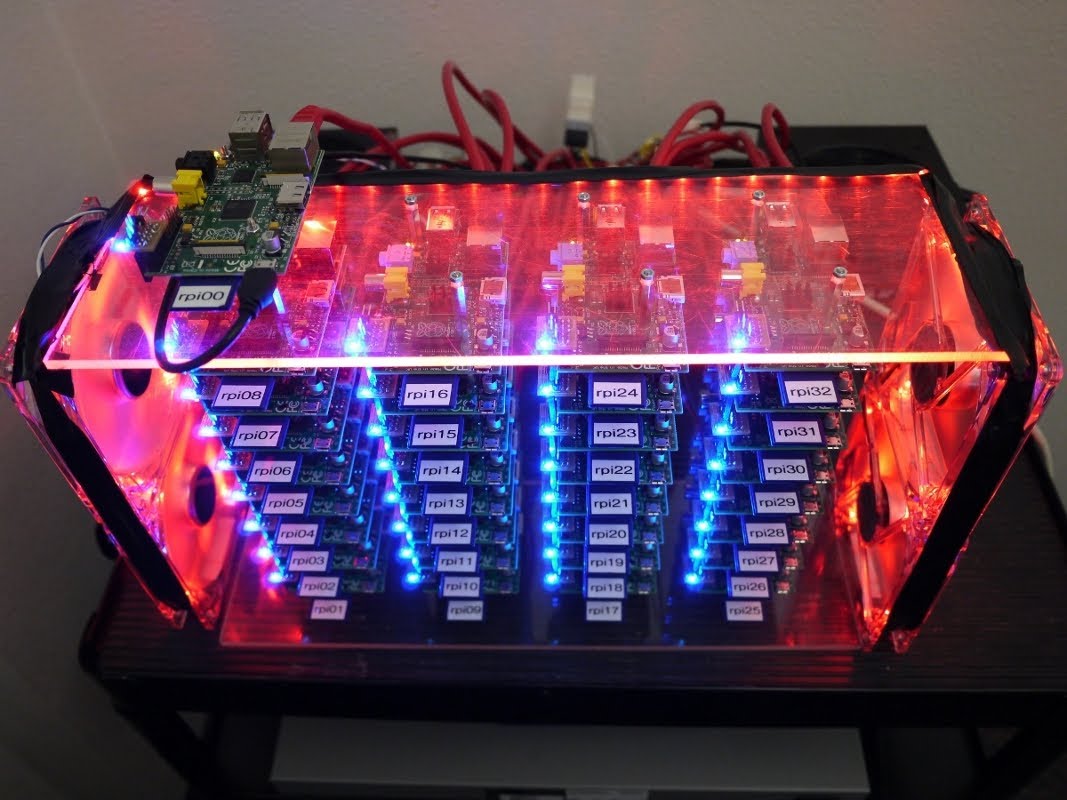He had a need to develop a distributed simulator for his dissertation work. And using raspberry pi seemed to be the cheapest way for the engineer. For the stacks he uses pcb standoffs for each column. This allows for component clearance and keeping things cool. He also drilled plexiglass to hold the whole structure together. For power management system he built a custom pcb to distribute 5 volts to each stack.
Many people go back and forth on the utility of raspberry pi and this commenter makes a good point:
The problem is that so many facebook pages and portals present this as a “cheap supercomputer” project. It is not. Ok, you can experiment with parallel processing with 30 or 64 nodes, but on the whole video I couldn’t find a single piece of information about (i) total power consumption and (ii) total processing power of project (except the ARM processor frequency). So in conclusion, the whole project gets more attention that it should from people who look after something different. I assume that an OpenCL software on a single R9 280X will be x10 times faster than the whole 33 node project – and around 7 times cheaper too!
The best part is that the community around raspberry pi is enthusiastic which will help improve the hardware and softwares associated going forward.
Pages: 1 2
